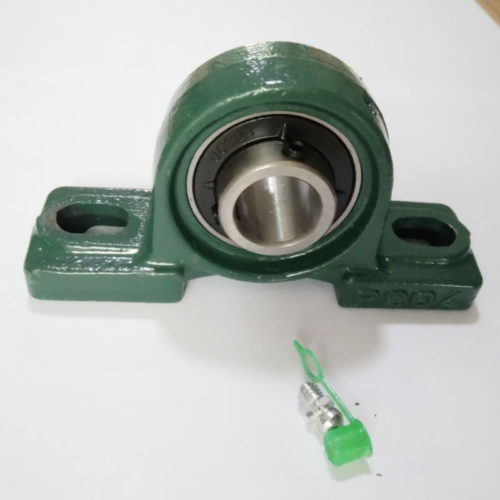Pillow block bearings are indeed important for a wide range of industries and applications. Here are some reasons why:
Provide support: Pillow block bearings are designed to support rotating shafts and other moving components, ensuring smooth and efficient operation of machinery and equipment. They can handle radial and thrust loads, making them ideal for applications that require both types of loads.
Easy to install: Pillow block bearings are typically easy to install and replace, as they are mounted in a housing that can be easily removed from the machine or system. This can reduce downtime and maintenance costs.
Reduce maintenance: By providing support and reducing friction, pillow block bearings can help reduce wear and tear on other components of the machine or system, such as the shaft and motor. This can help extend the life of the equipment and reduce the need for frequent maintenance and repairs.
Versatile: Pillow block bearings are available in a variety of sizes, shapes, and materials, making them suitable for a wide range of applications across different industries, including agriculture, mining, construction, and manufacturing.
Cost-effective: Pillow block bearings are often more cost-effective than other types of bearings, as they can be easily replaced and require less maintenance than other components of the machine or system.
Overall, pillow block bearings play an important role in ensuring the proper operation and longevity of machinery and equipment across a wide range of industries. Pillow Block bearing Manufacturers By selecting the appropriate pillow block bearing for your application and ensuring proper installation and maintenance, you can help ensure optimal performance and durability of your equipment.
How often should pillow block bearings be replaced?
The frequency of replacing pillow block bearings depends on several factors, including the specific application, operating conditions, and maintenance schedule. In general, pillow block bearings should be replaced when they are worn or damaged beyond repair, or when they no longer meet the requirements of the application.
Here are some factors to consider when determining the replacement frequency of pillow block bearings:
Operating conditions: Pillow block bearings that are used in harsh environments, such as high temperatures, humidity, or exposure to corrosive substances, may need to be replaced more frequently than those used in normal operating conditions.
Load and speed: Pillow block bearings that are subjected to high loads or speeds may wear out more quickly than those that are subjected to lower loads or speeds.
Maintenance schedule: Regular maintenance, such as lubrication and cleaning, can help extend the life of pillow block bearings and reduce the frequency of replacement.
Inspection: Regular inspection of pillow block bearings can help identify any signs of wear or damage and determine if replacement is necessary.
Quality of bearings: The quality of the bearings can also affect their lifespan. Higher quality bearings may last longer and require less frequent replacement than lower quality bearings.
In general, it is recommended to replace pillow block bearings every 3 to 5 years, or sooner if there are signs of wear or damage. However, the replacement frequency can vary depending on the factors mentioned above. It’s important to follow the manufacturer’s recommendations for replacement and maintenance to ensure optimal performance and longevity of your machinery and equipment.

Comments